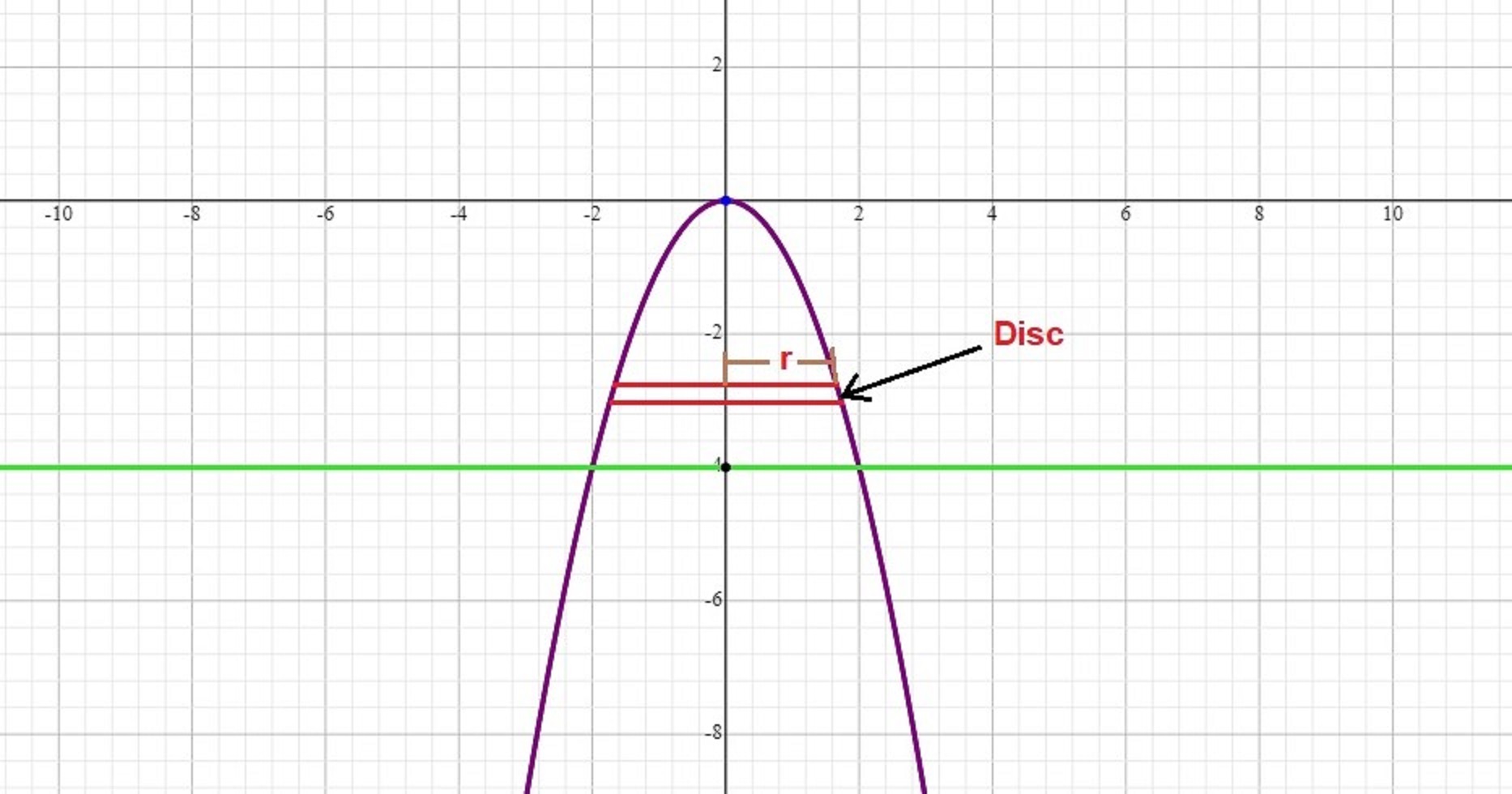Determines the volume that originates the surface bounded by the parabola and the line when turning around the axis Y?
determines the volume that originates the surface bounded by the parabola #y + x^2 = 0# and the line #y + 4 = 0# when turning around the axis Y
determines the volume that originates the surface bounded by the parabola
1 Answer
Explanation:
.
Let's find the intersections of the line with the parabola:
Let's see what the area looks like:

The parabola is shown in purple.
The horizontal line is shown in green.
The area bounded by these two curves is rotated around the
If we envision a cross-section (slice), perpendicular to the
If we take the equation of the parabola and solve for
The radius of the disc is
The area of the disc is
The volume of the disc is
If we now imagine that the thickness of this disc, i.e.
To add these volumes together, we take the integral of the volume function for the disc and evaluate it between

